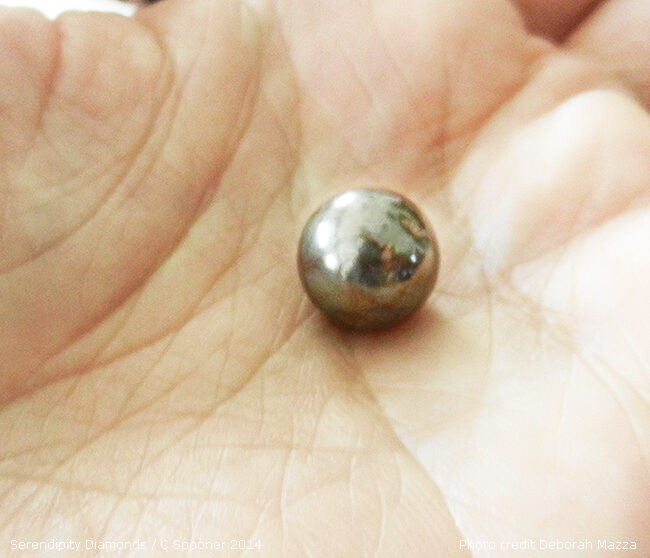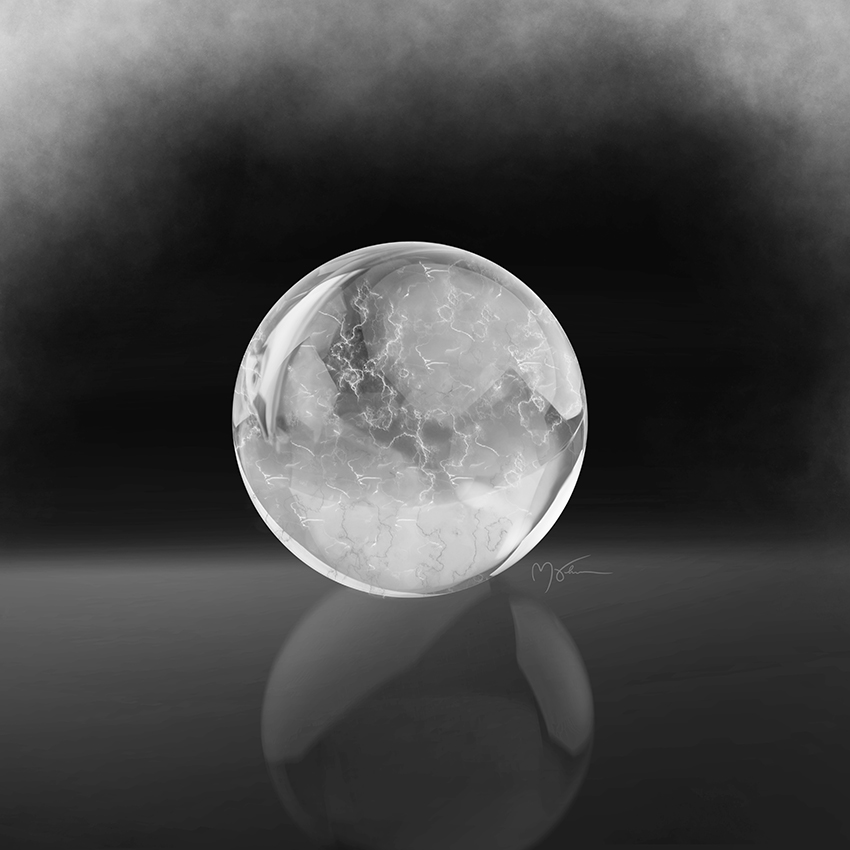Click here to get this article in PDF

The first spherical diamond
Spherical diamonds differ in appearance to traditional diamond cuts. In fact, they bear a greater similarity to Cabochon gemstone cuts with a rounded polished surface. Imagine a small crystal ball, similar in size to a small marble.
On a field trip to Idar-Oberstein in Germany, a group of gemmologists discovered a most unusual diamond. The stone, cut by master diamond cutters Ph. Hahn & Sohne resembled a pearl with a distinctive difference. But, on closer inspection, its reflective properties revealed something far more exciting.
“We just had the idea to try such a round ball,” said Dieter Hahn, the CEO of Ph. Hahn & Sohne, the oldest diamond cutting workshop in Germany.
The first spherical diamond came out of an industrial rough diamond, polished into a perfect round spherical diamond. The diamond measured 10mm in diameter with a carat weight of 9.41cts.
The expertise of this diamond cutting company resulted in a diamond of unusual beauty made with a unique ability.
Furthermore, the diamond’s resistance to friction gave the stone unique kinetic properties.
The town of Idar-Oberstein long famed for its gem cutting expertise, dates back 400 years.
Originally Idar and Oberstein were separate valley towns united by a river. But, the geological finds within their hills included amethyst, jasper, and agate.
For this reason, mining became integral to the area. And, as a result, cutting workshops grew up along the river. Streams powered mills with enormous sandstone water wheels turned by water.
This heritage of expertise in gem cutting resulted in an area famed for its advanced lapidary skills. At the same time, the region gave rise to notoriety for its excellence in innovative techniques.

Spherical lab-grown diamonds
Since then, scientists at Ehime University in Matsuyama have formed the first perfectly spherical lab-created diamond. The diamond weighed 4 carats and measured 7.5mm in diameter. The university named the diamond Hime, and was produced by the universities Geodynamics Research Center.
How are sphere-shaped diamonds created?
Very few spherical diamonds exist. A sphere-shaped diamond requires a piece of rough ground down into a perfectly round shape. Conversely, most diamonds go through a cutting process ahead of the final polish.
At the same time, spherical diamonds go through 100% polishing. And the final polish requires intensive polishing with diamond powder. In fact, every part of the surface requires an even polish. For this reason, the technical skill and abilities of the polisher go beyond the traditional skills of the lapidiarist.
Traditional diamond polishing
The following video shows the traditional techniques of a diamond cutter. As a result, we develop an understanding of skill required to cut a diamond into a traditional cut of diamond.
The above article was first featured on the Serendipity Diamonds blog on August 29th 2014, later revised. With thanks to our friend C. Spooner for her writing contribution and field-trip photography.
The post Spherical Diamond Cuts – The Beauty of Spherical Diamonds appeared first on Serendipity Diamonds Blog.
